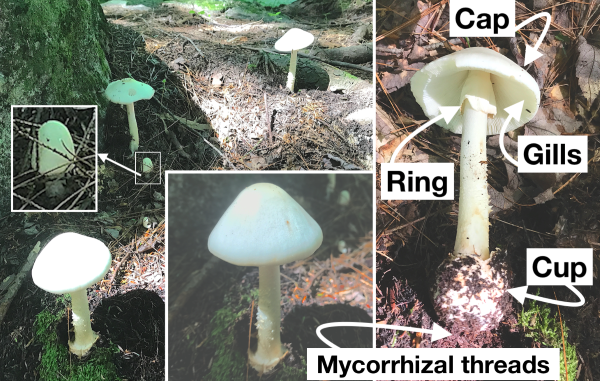Moist Soils Sprout Toxic Mushrooms
- July 29th 2023
- Nature

Destroying Angel colony at McKeon Reserve
By Kevin McKeon, Maine Natural Naturalist
The recent rains have made the forest soils a welcome space for mushrooms to flourish. Mushrooms are the spore-spreading reproductive parts of the mycorrhizal networks of creatures living in the forest soils. You’ll see these mycorrhizae all the time—just dig a bit into the soil and you’ll notice tiny white threads called hyphae everywhere. Under your foot is over 300 miles of the stuff! This is the body (mycelium) of the creature that sends up mushrooms to reproduce.
But some of these creatures can be deadly, such as Destroying Angel.
This mushroom’s name is apt; it is one of the most toxic known mushrooms, causing vomiting, diarrhea, and cramps 6 to 24 hours after eating it; This delay in symptoms makes diagnosis difficult. Then, the insidious part is that you’ll start to feel better for a short time. The delayed reaction, and the short-lived relief, can cause a delay to seek treatment—resulting in complications. So, this angel tricks you into thinking that you’re getting better but instead, it attacks your liver and kidney, causing irreversible damage, often leading to organ failure and death after four days or so.
This white mushroom is in the genus Amanita, which causes the majority of mushroom-poisoning deaths. Some immigrants have mistaken “Death Cap” for a safe look-alike in their home country. Destroying Angel is also deadly to dogs and cats.
There is no acceptable antidote, although herbal combinations using milk thistle show promise. In the past, such poisoning was fatal in more than half of the cases, but today about 85 to 90 percent of people survive if treated early. When diagnosed properly and soon enough, hospital treatments, including dialysis and organ transplant, are possible.






